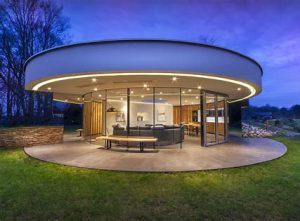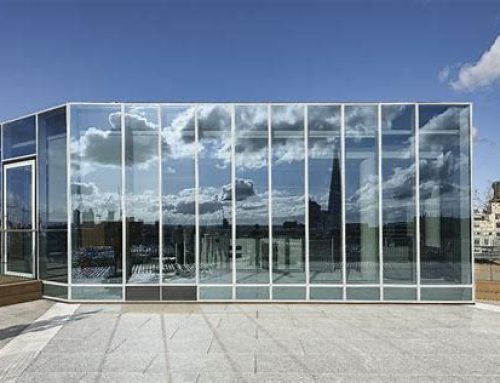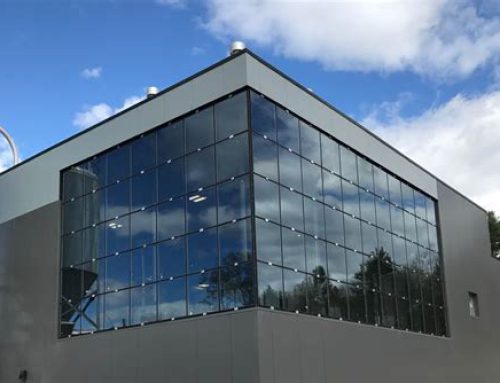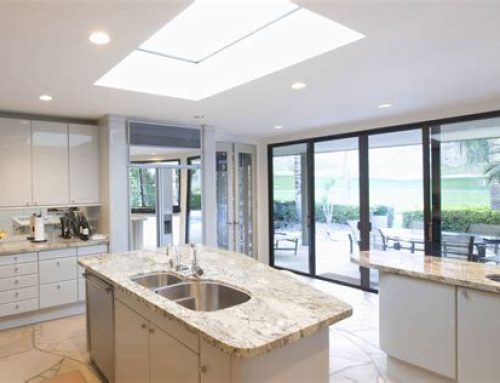Exterior glass walls houses

Exterior glass walls houses ,In the realm of contemporary architecture, the boundary between indoors and outdoors is increasingly becoming blurred, quite literally. One of the most striking manifestations of this trend is the rise of houses adorned with exterior glass walls. From sleek urban residences to serene countryside retreats, these structures redefine living spaces by seamlessly integrating with the surrounding environment while offering a myriad of benefits to inhabitants. Let’s delve into the allure of exterior glass walls in modern architecture.
Aesthetic Elegance
Exterior glass walls epitomize elegance and sophistication in architectural design. Their transparent nature allows for unobstructed views of the landscape, whether it’s a sprawling metropolis, lush forest, or picturesque coastline. By dissolving the visual barriers between indoor and outdoor spaces, these walls create a sense of continuity and harmony with nature, enhancing the overall aesthetic appeal of the structure.
Natural Light Infusion
One of the most coveted features of exterior glass walls is their ability to flood interiors with natural light. Unlike traditional walls, which can block sunlight and create dark, enclosed spaces, glass walls harness the sun’s rays to illuminate rooms, reducing the need for artificial lighting during the day. This not only enhances the ambiance of the interior but also contributes to energy efficiency, reducing reliance on electricity.
Seamless Integration
Exterior glass walls excel at blurring the distinction between indoor and outdoor living spaces, facilitating a seamless transition between the two. Whether it’s stepping from the living room onto a sun-drenched terrace or enjoying panoramic views from the comfort of a bedroom, occupants feel intimately connected to their surroundings. This integration fosters a sense of openness and freedom, enriching the living experience and promoting a deeper connection with nature.
Spatial Expansion
In addition to enhancing visual appeal, exterior glass walls create an illusion of spaciousness, making even compact interiors feel larger and more expansive. By extending sightlines beyond the confines of walls, these structures amplify the perceived size of rooms, imparting a sense of airiness and freedom. This spatial expansion is particularly advantageous in urban settings, where space is often at a premium, allowing residents to maximize every square foot of their living environment.
Environmental Considerations
While the aesthetic and functional benefits of exterior glass walls are undeniable, their widespread adoption also raises important considerations regarding energy efficiency and environmental impact. To mitigate heat loss/gain and minimize energy consumption, architects incorporate high-performance glazing systems, thermal breaks, and shading devices into the design. Additionally, advancements in smart glass technology enable windows to adjust their transparency based on external conditions, optimizing natural light and heat gain throughout the day.
Challenges and Considerations
While the allure of exterior glass walls is undeniable, their implementation also poses certain challenges and considerations for architects and homeowners alike.
Privacy Concerns: The transparency of glass walls may compromise privacy, particularly in densely populated areas or urban settings. To address this issue, architects incorporate strategies such as frosted or tinted glass, strategic positioning of rooms, and landscaping features to provide a sense of seclusion without sacrificing natural light or views.
Maintenance Requirements: Glass surfaces require regular cleaning and maintenance to preserve their clarity and visual appeal. Dust, fingerprints, and water spots can accumulate over time, detracting from the overall aesthetic of the structure. Homeowners must factor in the cost and effort associated with maintaining exterior glass walls when considering this design element.
Thermal Efficiency: While exterior glass walls offer abundant natural light and panoramic views, they can also pose challenges in terms of thermal efficiency. Without proper insulation and glazing, glass walls may contribute to heat loss in colder climates and heat gain in warmer climates, leading to increased energy consumption for heating and cooling. Architects must carefully select materials and design features to optimize thermal performance and minimize environmental impact.
Structural Integrity: Glass walls must be engineered to withstand various environmental factors, including wind, seismic activity, and thermal expansion/contraction. Proper structural support and reinforcement are essential to ensure the stability and safety of the building, particularly in regions prone to extreme weather conditions or seismic events.
Future Trends and Innovations
As architectural technology and design principles continue to evolve, the future of exterior glass walls holds immense potential for innovation and creativity.
Smart Glass Solutions: Advancements in smart glass technology allow windows to dynamically adjust their transparency, tint, and thermal properties in response to changing environmental conditions. This enables greater control over natural light, privacy, and energy efficiency, enhancing the functionality and versatility of exterior glass walls.
Sustainable Materials: With growing emphasis on sustainability and eco-conscious design, architects are exploring alternative materials and construction techniques for exterior glass walls. Recycled glass, low-emissivity coatings, and insulated glazing units offer environmentally friendly solutions that reduce energy consumption and minimize environmental impact.
Biophilic Design Integration: Biophilic design principles emphasize the innate human connection to nature and advocate for incorporating natural elements into the built environment. Exterior glass walls provide an ideal canvas for integrating biophilic elements such as indoor greenery, natural textures, and water features, fostering a sense of well-being and connection to the natural world.
Conclusion
Exterior glass walls represent a bold departure from conventional architectural norms, offering a compelling fusion of aesthetics, functionality, and sustainability. By embracing transparency and integrating seamlessly with the natural environment, these structures redefine the concept of modern living, enriching the lives of occupants while harmonizing with the world around them. As architects continue to push the boundaries of design innovation, exterior glass walls are poised to remain a defining feature of contemporary architecture, captivating admirers and inspiring awe for generations to come, Exterior glass walls houses.





Leave A Comment